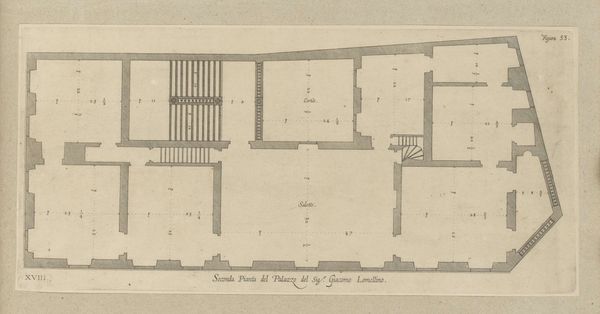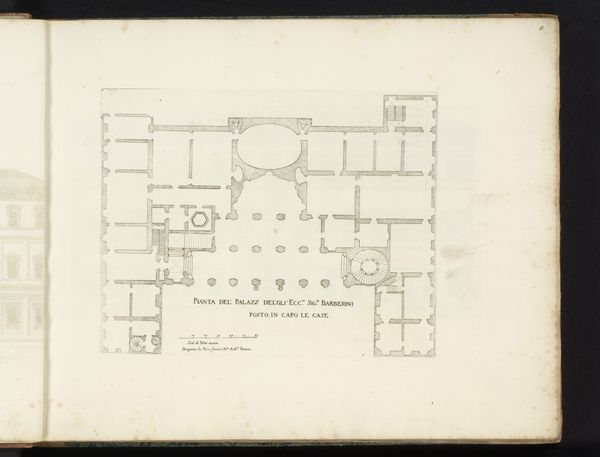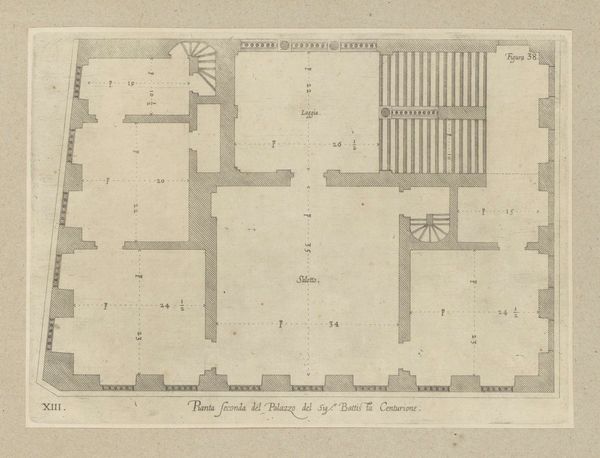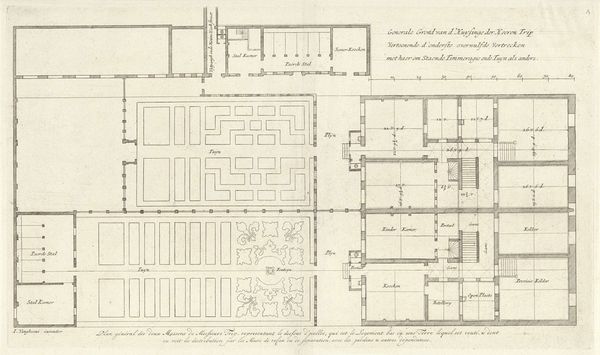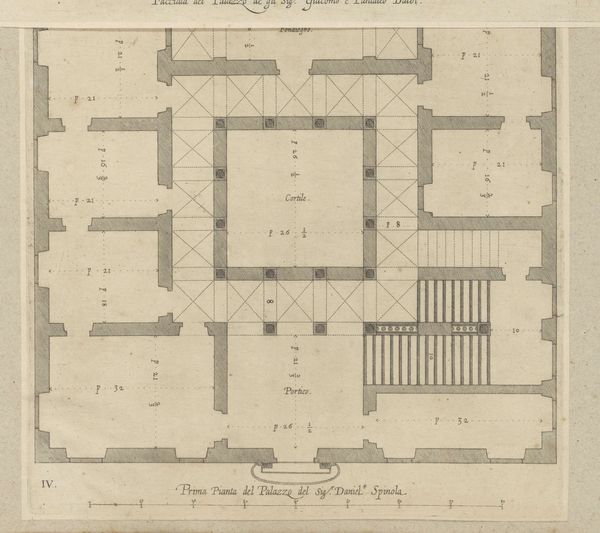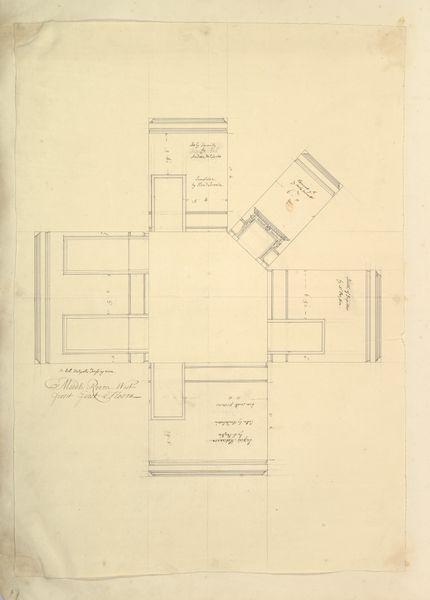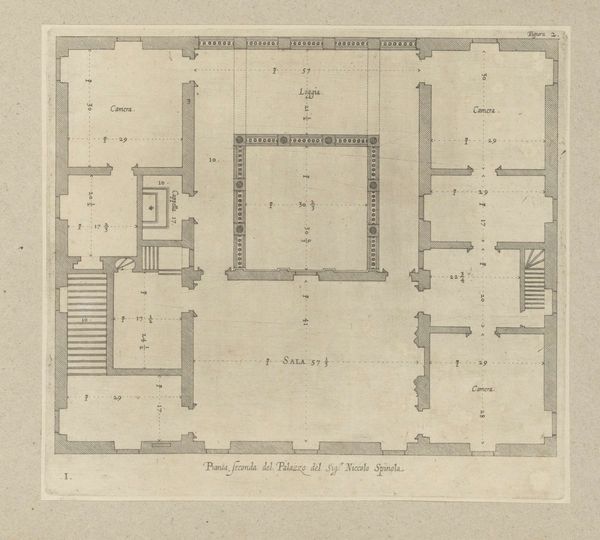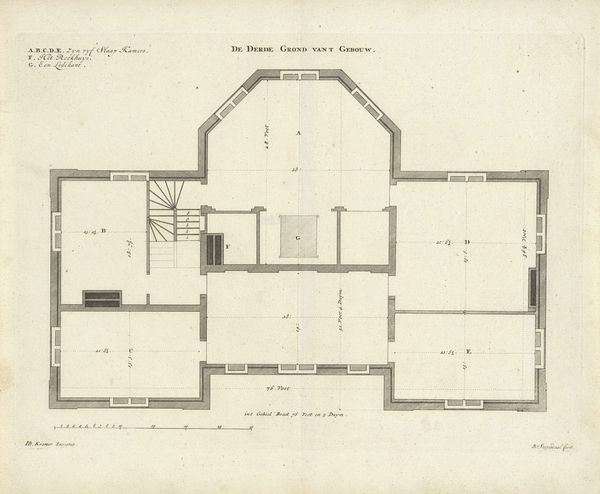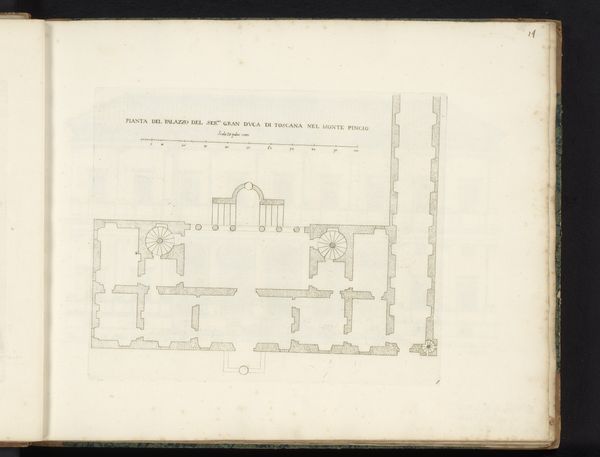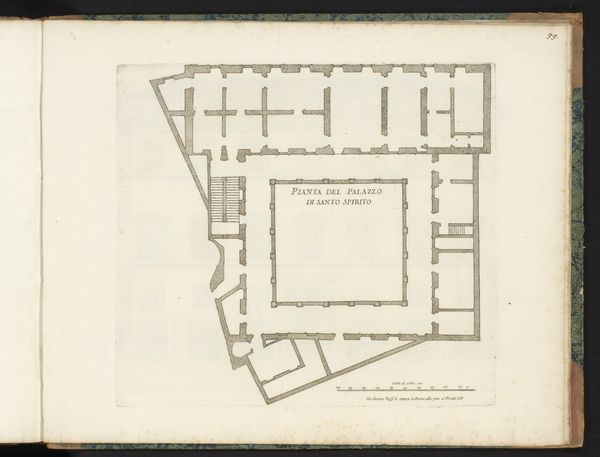
Dimensions: height 166 mm, width 169 mm
Copyright: Rijks Museum: Open Domain
Curator: Here we have “Plattegrond van de grafkelder van het Huis Oranje-Nassau,” or "Plan of the Burial Vault of the House of Orange-Nassau," a print dating from between 1759 and 1790, attributed to Jacob Folkema. It's currently held in the Rijksmuseum collection. Editor: It’s remarkably spare. All straight lines and angles. Quite functional, really, though undeniably morbid, considering its subject matter. Curator: Indeed. Folkema presents us with an architectural blueprint rendered through etching and engraving. Notice the calculated precision. The print isn’t about aesthetics per se, but about spatial relationships and a graphic representation of power. Editor: You see power, I see…mortality. This cold, systematic mapping-out reduces human remains to mere inventory, doesn’t it? Coffins neatly numbered and compartmentalized. What are we to make of such detachment? Curator: Well, considering the Baroque stylistic elements at play, perhaps that detachment serves a purpose. The cool rationalism checks the overwhelming emotions associated with death. It’s about asserting control over the chaos of existence. Editor: I’m more inclined to see how this controlled image works as a document that is steeped in politics. It illustrates the house of Orange-Nassau’s dominion even in death, marking a clear lineage. It’s designed for public consumption to establish historical narratives around leadership. Curator: Undoubtedly. Note how the design of the vault seems to reinforce hierarchy, the arrangement of the coffins hinting at the social standing of those interred. Each coffin in a prescribed place in the structure. Editor: The location, the Rijksmuseum, only deepens that function. A former site of national importance where visitors engage in collective memory to negotiate present-day socio-political identity, I imagine? Curator: Yes. Placed in the context of the museum it emphasizes the continuous authority across temporal junctures. In its original period, this engraving would circulate as a confirmation of power, today, it still invites analysis of power. Editor: I am seeing it anew now. All those neatly arranged boxes. Thank you for that clarity of form, Curator. Curator: As do I with that wider consideration of its political function, Editor. Thanks to that, its power has become more explicit.
Comments
No comments
Be the first to comment and join the conversation on the ultimate creative platform.

